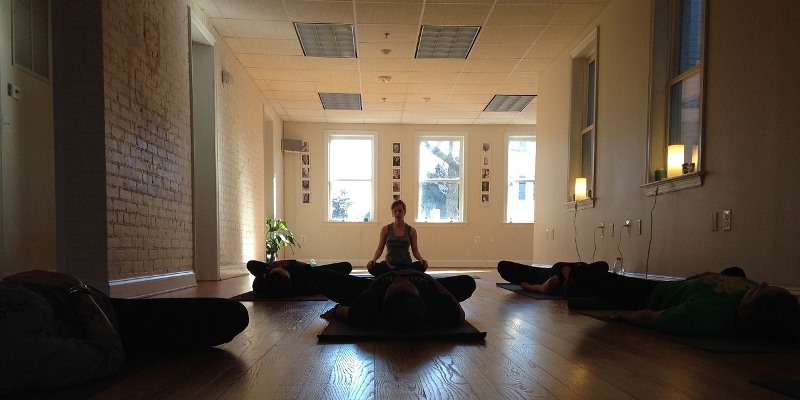
Nidra Yoga (or Yoga Nidra) is an ancient type of Indian Yoga that induces a relaxing, meditative state of consciousness between waking and sleeping. The Sanskrit word Nidra means sleep. As such, Nidra Yoga is also called the Yogic sleep.
The state that Yoga Nidra brings about is sometimes compared to so-called Hypnagogia, which is the transitional state from wakefulness to sleep. Various phenomena may occur during this phase, such as hallucinations, introspection, lucid thoughts, and lucid dreaming (being aware that one is dreaming).

The Nidra Yoga state of consciousness is typically induced by some form of Guided Meditation by a Nidra Yoga or Meditation teacher, or alternatively, by visualizations, or by mentally reciting certain chants or mantras through Japa Yoga or Mantra Yoga techniques.
Nidra Yoga brings the body in a fully relaxed state, calms the mind, and relieves from stress and anxiety. As such, the practice also helps to alleviate or cure associated ailments such as headaches, lightheadedness, chest pains, palpitations, excessive sweating, and abdominal pains, among others.
The experience of Yoga Nidra is one of a partial withdrawal of the senses, while becoming more internally aware. This state can be used to better examine or observe one’s own mental and emotional processes, which may be an opportunity for introspection and trauma healing. Traditionally, however, the end goal of Yoga Nidra is to achieve a state of Samadhi, which is described as a still, mindful and blissful state of consciousness.
A modern application of Yoga Nidra is used in the Integrative Restoration methodology (iRest) developed by Richard C. Miller, a clinical psychologist, author, researcher and scholar of Yoga. The iRest Institute provides events, teacher trainings, and educational content based on the Yoga Nidra teachings, adapted in a form more accessible for modern day living. Its goal is to bring the healing benefits of Yogic and meditative practices to a wide variety of people.
















